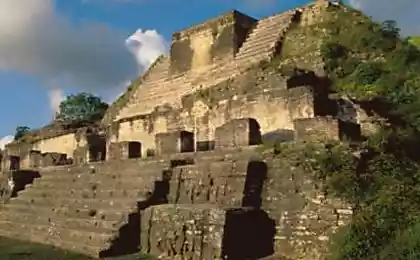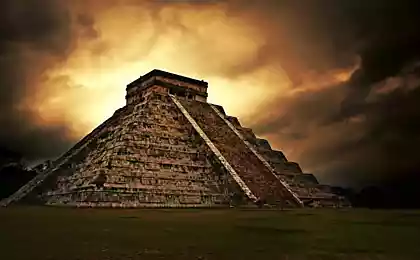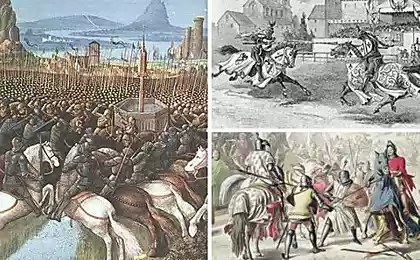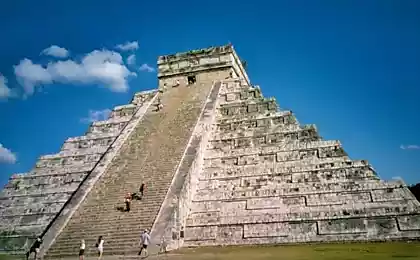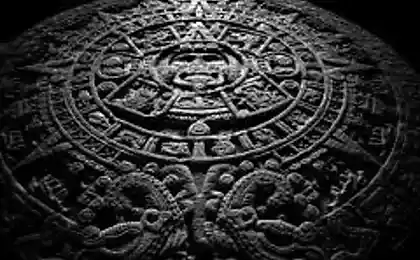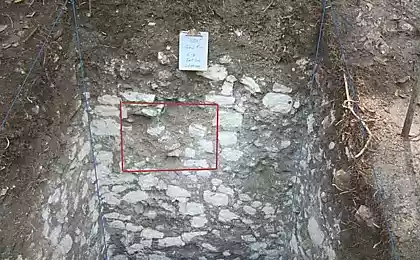534
Proven the authenticity of the Code of the Continent — the fourth of the surviving Maya Codex
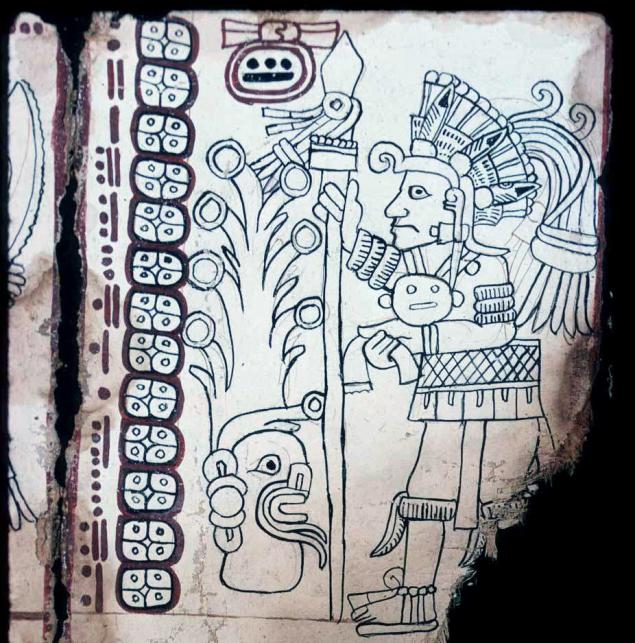
Page 7 Code of the Continent on paper from the bark of ficus. It depicts the figure in a headdress with feathers. Headdress equates the figure to the gods from the tables of the planet Venus in the Dresden Codex. Before him stands the bearded head of God C, presumably associated with the Polar star, from which grows a plant with buds in the form of discs. Scanned image: the Code of the Continent
In the XVI century konkistadory and Catholic missionaries worked hard to destroy the extensive priestly and governmental libraries of the Maya. Overall, they succeeded. Of the hundreds of native American books to the present time survived only three books (called "codes"). These unique artifacts are called by the name of the cities in the museums where they are stored: the Dresden, the Paris and Madrid codices of the Maya. Of these, only the Dresden Codex had been preserved. Scientists are still studying the astronomical records in it, based on the results of Mayan observations at the stars for many centuries.
In 1971, the community of experts on Mayan history was a real sensation. Mexican collector josé Saenz (Saenz José) decided to show the world his greatest treasure — the fourth of the surviving Maya Codex, which he in 1965 he allegedly bought from a group of unknown persons. 20 APR 1971 artifact put on public display in a gentleman's club of the Continent, where the code and got the name.
Of course, the story caused a lot of doubt. Jose Saenz was told that he was taken to an unknown place where unknown persons have offered to buy a few artifacts, including a page of the code allegedly found recently in a cave in the mountains of Mexico's Sierra Madre de Chiapas.
The code consists of 11 damaged paper fragments (from the bark of different species of ficus), the format of 18×12.5 cm each; image on only one side of the sheets. It is assumed that the original consisted of no less than 20 sheets.
As you know, Maya harbored a morbid passion for the stars and even the location of cities was chosen in accordance with a star schema. The content found in the Code of the Continent resonates with the Venus tables in the Dresden Codex. It contains images of the same gods and astrological data corresponding to the phases of Venus in a simplified the Dating of the Mayan calendar.
An example of date according to the Mayan calendar
Time is counted in cycles of 13 Baktuns (13 x 144 000 days).
The starting date of the current cycle is 0.0.0.0.0, 4 Ahau, 8 Cumhu
24.10.2004 = 12.19.11.13.0, 1 Ahau, 3 Sak (correlation 584 283)
24.10.2004 = 12.19.11.12.18, 12 Eznab, 1 Sak (correlation 584 285)Experts immediately questioned the authenticity of the Code of the Continent. This can be understood if we take into account the astronomical amount at which the instrument could estimate at auction. Probably, speech can go about tens or hundreds of millions of dollars.
Conducted radiocarbon analysis allowed us to date the manuscript 1230, but did not convince the skeptics. They continued to argue that the manuscript could be made on original paper sheets were found during the excavations.
Re-examination of 2007 gave conflicting results.
And only now, in 2016, scientists can put the final point in this dispute (although can not supply). The authenticity of a manuscript with a high degree of reliability is confirmed by a group of respected scientists from brown University, Harvard University and University of California-riverside (USA). Scientists have conducted a thorough analysis of all previously conducted expert examinations and scientific research on this subject and with all the authority concluded that the authenticity of the manuscript.
The authority of the scientists who signed this work suggests the achievement of scientific consensus on the question of the authenticity of the Code of the Continent. He really is the fourth of the surviving Maya Codex.
The group, led by Professor Stephen Houston Stephen Houston of brown University, carefully studied the origin of the manuscript, performance and style of iconography, nature and value of the tables of Venus, the scientific data, including radiocarbon data analysis, as well as the physical characteristics of the code itself — how it was produced, what paper, how applied decals. They came to the conclusion that all characteristics of the code is probably genuine. The research list in detail all the arguments of skeptics about the authenticity of the code and reasoned answer to every argument.
According to them, differences with the Dresden Codex (for example, different pattern on the feet of the God of death) should not be considered a proof of forgery. Just previous codes, including the Dresden Codex, was found early that gave them canonical status. At the same time, radiocarbon Dating shows that the Code of the Continent written earlier than the Dresden Codex.
Paper from the bark of ficus, thin red lines sketch under the drawings, and blue pigment ink Maya completely authentic, scientists say. They list a list of knowledge that was supposed to have (or guess) a clerk to positively fake document in the middle of 1960-ies. The list included the information that became known to scholars only in the last 45 years after the discovery of the code. This list is so large that it can be considered "banning", that is practically impossible from the point of view of probability theory. Incredibly, the clerk guessed all these details.
For example, the synthesis of blue ink, the same ink, Maya, was conducted by Mexican scientists only in 1980-ies.
On the pages of the Code of the Continent depicts the everyday gods of the Maya, who accompanied them in everyday life: the gods of Sun, death, lightning and others. Although they are all, according to Mayan beliefs, carry out the will of the stars, specifically, will "star" of Venus. In the Dresden and Madrid codices presents a greater variety of gods, but in the Code of the Continent — only the basic set.

Page 6 Code Of The Continent. The God of death (God A) in a simple headdress with a knife in hand just decapitated another God, from the neck which the blood is flowing. Knife beheading this form of the God of death found on one's temple of the warriors at Chichen-Itza. Scanned image: the Code of the Continent
According to scientists, the Code of the Continent is predictive, and not narrative. Rather, it describes events that must happen in the future, not past events. Judging by the dates, the code can be used as a desktop calendar priests during 104 years after the creation date.
Code of the Continent is now kept in the National Museum of anthropology in Mexico city. On public display it is not set. Probably it is connected with the scandalous story that accompanied its opening, and with doubts about the authenticity of the document. Now, when these doubts largely dissipated, a unique artifact can attract more attention of the public and the scientific community.
A 50-page scientific article with analysis of examination results of a group of scientists published in the last volume of the magazine Maya Archaeology.
Source: geektimes.ru/post/280356/
Analysis of acoustic signals bottlenose dolphins showed the potential that they have developed spoken language
European researchers have created a new composite material with variable transparency
